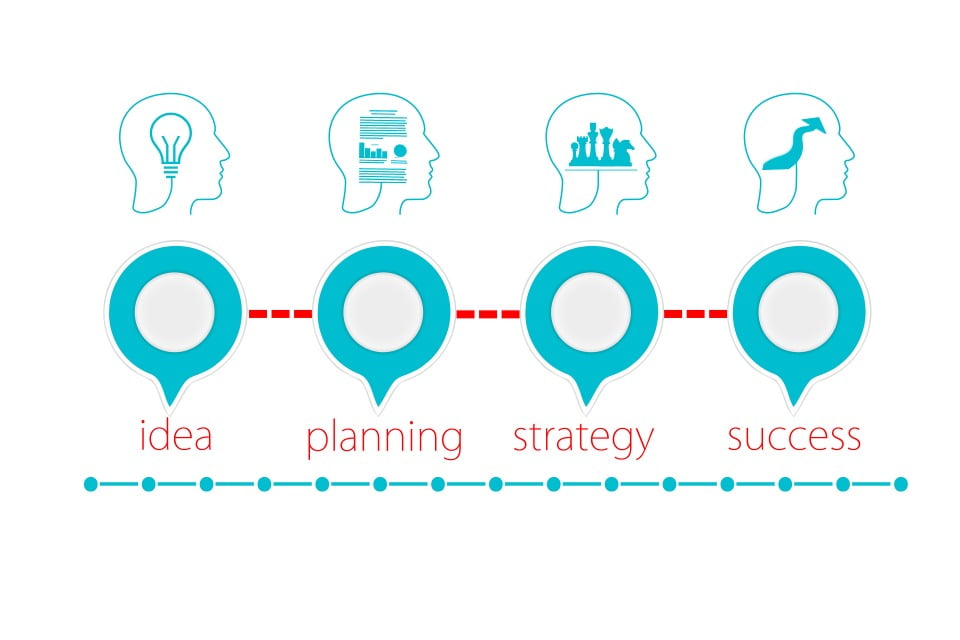Yes, college is one of the hardest times to find extra money for things you want to do on top of the things you need to do. It doesn’t cost much to start saving when you are in college, though. With so many free or cheap choices out there now, just $20 or $30 will get you into the game. In this post, we are going to explore 15 easy investing tips for college beginners without money. Even better, it makes you think about spending.
Coming to terms with the fact that you are an investor is the hardest part of starting to invest. This is true whether you are investing in real stocks or coins.
You should think about your stocks like an owner who is looking out for the long term. For example, you could look at what’s happening in the market every so often and make moves that look like they have a good chance of paying off. It’s helpful to learn these things early on when they won’t cost you much.
We usually think of rich people as the only ones who can invest, but that doesn’t have to be the case. Even before they start working, students should think about how they can use savings to build and protect their financial future.
From the very safe to the very risky, here are seven ways for college students to start saving.
Table of Contents

1. You might want to start with a high-yield savings account or CDs.
Opening a high-yield savings account is one of the easiest ways to save more money. These accounts give you interest on your deposits at rates that are much higher than those offered by regular savings or checking accounts. You can still take money out at any time. The rates on these kinds of accounts are the best they’ve been in years, thanks to a general rise in interest rates.
People who save money don’t usually think of bank goods like CDs and high-yield savings accounts as investments, but they are. Plus, they are some of the best options out there.
In exchange for putting your money in a CD for a certain amount of time, the bank will pay you a set rate of interest. You might want to put money into these products if you don’t need them until a certain date in the future.
For instance, if you have enough money saved for next year’s school fees, you probably want to put it in a very safe account that won’t change with the stock market. This is exactly the kind of thing that a CD can do.
2. Use a dealer that is free or doesn’t cost much.
This is a great time to start buying because it’s so cheap. There are a lot of great low-cost online brokers out there, like Fidelity Investments and Charles Schwab. They let you trade stocks and ETFs for free and offer great study and learning tools to help you get started. For example, both Fidelity and Schwab got perfect scores in these areas and are known for how well they treat their clients and how friendly they are to investors in general.
But you can use Robinhood if you want to go completely free. This is great for college students who want to save money. One of the best things about Robinhood is that it’s free to trade on it, and that goes for both options and crypto. For only $5 a month, Robinhood Gold also gives you access to Morningstar study. Robinhood is a great choice for people who want to save money because it has a nice trade-anywhere mobile app.
Webull is another choice for investors who want to save a lot of money. Webull and Robinhood both offer commission-free investing, but Webull has more ways to help customers and retirement funds that Robinhood doesn’t.
3. Put some money away every month
If you choose a commission-free broker, you can spend small amounts every month without worrying about fees eating up your money. In other words, more money goes into your funds or stocks. You only need to save $20 or $30 a month to start seeing your money grow in the stock market. Investors can now buy parts of a share through several companies.
No matter what the business is doing, it’s important to start. You’ll probably be more inspired to watch the market even if you only put a small amount of money into it. You can also start to think of yourself as an investment, which is very important. Putting money into investments also makes you more likely to study and look over your belongings. So it can be very helpful to start with even a little.

4. Get a fund that tracks the S&P 500
Any college student can make good money by putting their money into an index fund. A lot of the most popular index funds are based on the Standard & Poor’s 500 measure of big American companies. That’s a lot of stocks in the S&P 500 index; an index fund owns shares in all of them. The fund’s returns are usually less volatile than those of having individual stocks because it holds so many stocks in a lot of different businesses.
This is another good thing about index funds: you don’t need to know a lot to start. The return on an S&P 500 index fund is the same as the return on the market as a whole. That method works for most investors, according to famous investor and billionaire Warren Buffett. It’s a great way to learn how investing works.
5. Join a robo-advisor service
There is a service called robo-advisor that can help you choose stocks if you are not ready to do that work yourself. A robo-advisor buys a variety of funds based on your period and how risky you want to be with your finances to put together a portfolio for you automatically. Start investing with very little money—even $20 will get you started—and you can keep adding money without having to pay extra fees each time.
Robo-advisors usually charge a fee based on a portion of your assets, 0.25% per year. However, some don’t charge for small accounts. Two of the bigger robo-advisors that fit this price range are Wealthfront and Betterment.
You probably won’t have to pay the expert any extra fees. However, the funds you invest in will likely charge you fees based on how much you own. Most of the time, the planner will also give you other perks, such as good interest rates on cash accounts and the freedom to move your money around.
6. Use a money-making app
A trading app is one way to make the process of saving even easier. Stash is a famous mobile app that can help you with this. It lets you buy stocks or a variety of exchange-traded funds (ETFs). You can start right away for just $5, and the basic account costs $3 a month. Stash can help you learn how to trade on your own if you don’t know how to do it yet.
Acorns is another well-known saving app. Because it is so simple to use, it made Bankrate’s list of the best financial apps. For Acorns, you connect a debit or credit card. The app then rounds up purchases to the next dollar and puts the extra money into one of several ETF investments. Acorns charges $3 a month for an all-in-one membership and $5 a month for a family subscription.
Don’t want to risk real money just yet? You can practice buying and selling with fake money for free. This way you can learn the basics without having to worry about losing money.
7. Start an IRA
It might seem like you’re planning too far ahead to have an IRA while you’re still in college. But if you have a job and can save money, as many students can, an IRA can be a great way to build your savings for the future.
You can put off paying taxes on any gains or returns that come from an IRA. You can also deduct your payments from your taxable income, which saves you money on taxes. Also, the earlier you start putting money into a tax-advantaged account, the longer you have to use the power of compounding to get your account to its fullest.
Another great way to start saving for retirement is with a Roth IRA. When you put money into a Roth IRA, the money is already taxed, so you won’t save any tax right away. But when you retire, the money you take out will be tax-free. Make payments while you’re in college when your income tax rate is probably low. That way, you won’t have to pay a big tax bill when your income is higher. In a Roth IRA, your savings will grow tax-free, just like in a standard IRA.
With a little work, those benefits can be easy to get.
8 . Investing in Mutual Funds
Mutual funds are another investing option for college students with limited cash. Mutual funds aggregate funds from different participants to invest in a diverse portfolio of stocks, bonds, or other assets. Professional fund managers oversee them.
Even with tiny investing amounts, mutual funds provide quick diversification. They are handled by specialists, which eliminates the need for in-depth investment expertise and study.
We recommend that you seek mutual funds that have a proven track record, reasonable expense ratios, and an emphasis on long-term development. Consider index funds, which seek to mirror the performance of a certain market index.

9. Loans Between Individuals
Have you ever heard of peer-to-peer lending? If you want to receive money, these sites put you in touch with private lenders instead of going through banks. Investors give money to people who need it and get interest on their money.
When compared to regular savings accounts, peer-to-peer loans can offer better returns. But there is also a chance that the loan will not be paid back, so you need to do a lot of study and spread your money around.
Do some research on reliable peer-to-peer lending sites that have a history of making loans and keeping them up to date. Check out how they screen potential borrowers and how they get money back from people who don’t pay.
10. Real Estate Investment Trusts (REITs)
If you don’t have a lot of money, investing in real estate could be another interesting choice for you. Real estate investment trusts, or REITs, are businesses that own, manage, or finance properties that bring in money. You can get into the real estate market without actually having buildings if you invest in REITs.
You might want to buy in REITs that are traded on stock markets and open to the public. If you buy shares in these REITs, you can get rental income.
11. Cash for emergencies
Finally, let’s talk about emergency funds. As a college student, you may have to pay for a lot of things, like food, housing, and education. Long-term investments are important, but building a disaster fund is just as important for building a strong financial base.
An emergency fund is like a safety net; it gives you the money you need to deal with sudden costs or changes in your income, like medical bills, car repairs, or losing your job. College students need to have an emergency fund, so let’s jump right into how to do it.
12. Set goals for saving.
First, figure out how much you need to save for emergencies. Money experts say that you should aim for three to six months’ worth of living costs. Look at your weekly costs, such as rent, energy, food, transportation, and any other important costs. To find your savings goal, multiply this number by the number of months you want to cover. Even though three months’ worth is a good place to start, aiming for six months’ worth is even safer.
13. Make a budget.
To build an emergency fund, you have to be serious about saving money. Make a reasonable budget to keep track of the money you earn and spend. Find places where you can spend less so that you can put more money into your emergency fund. This could mean giving up things that aren’t necessary, like going out to eat or having fun.
You could use the planning app Wallet by BudgetBakers to keep track of your progress and stay prepared. You can link all of your bank and Neobank accounts to the Wallet app to see a full list of ALL your income and spending. You can also make budgets for things like planned costs like rent, books, fees, savings, or trips. The data part will show you where you can save money and where your monthly money goes.
14. Pay off your loans faster
You might want to refinance if you want to invest but your monthly student loan payments are taking up a lot of your money. By getting a new loan with a lower interest rate and paying off your old debt faster, you should be able to lower your monthly loan payments and the amount of interest you’ll have to pay. Not only will that give you more money in the long run, but it may also give you more time to spend right now.
15. Compare returns to interest rates
If the interest rate on your loans is below 6%, it might make more sense to invest your money than to pay them off. That’s because those gains are likely to earn you more money in the long run than paying off your loans faster will save you.
Take the case where you still owe $20,000 on your college loans with 3% interest for the next ten years. It will cost you $3,175.2 in interest. That loan would cost you $3,175 less if you paid it off right now with $20,000.But if you put that $20,000 to work instead, If the rate of return is averaged at 6% you’ll make about $5,817 from that investment. In this case, it might be smarter to spend than to pay off the whole loan.
Conclusion:
For college students who want to spend, the most important thing is also the most urgent: start right away. You can start making plans for your future as soon as you start learning about the market. Students can start with small amounts of money and work to improve both their portfolios and their skills.
Remember that it’s smart to take things slowly when you’re first starting. Going “all-in” on a stock or type of product is very dangerous, and if the price goes down, you could lose a lot of money. The feelings that come up when you buy are likely to be volatile, and learning how to handle them is a big part of the learning process.
